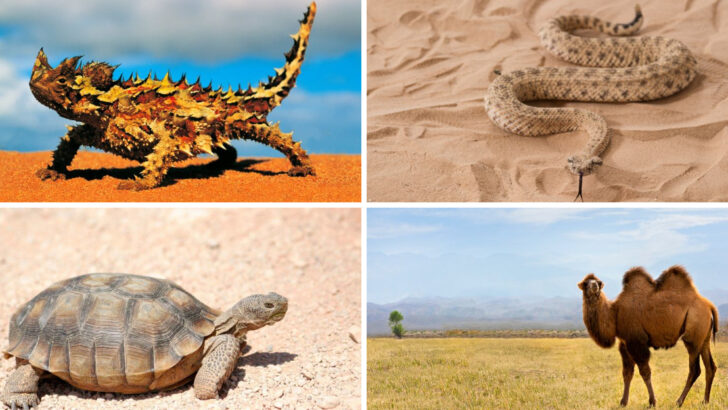Surviving in a desert is no easy feat—especially when water is scarce. Yet, many animals thrive in these harsh environments, having developed extraordinary ways to conserve or even go without water for long periods. Their survival strategies are nothing short of remarkable, showing how life can adapt to even the most extreme conditions on Earth.
In this article, we’ll take a look at 20 incredible adaptations that desert animals use to survive without access to water. From conserving moisture to finding creative sources of hydration, these creatures have evolved in fascinating ways to meet the challenges of their environment. Their survival tactics might make you think differently about what it takes to live in one of the planet’s toughest places.
Fennec Fox’s Large Ears
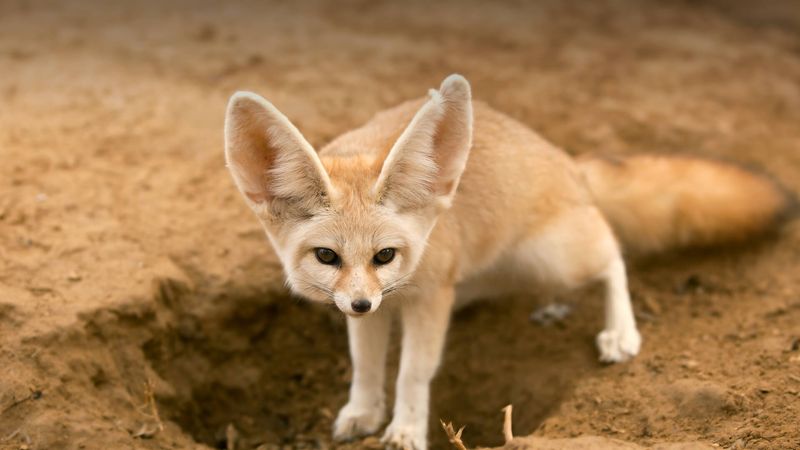
The Fennec Fox is known for its oversized ears, which are not just for hearing. These ears help dissipate heat, serving as natural air conditioners. During the intense heat of the day, their large ears radiate warmth, allowing the fox to maintain a cooler body temperature. This adaptation is crucial for their survival in the Sahara Desert. At night, when temperatures drop, their ears aid in detecting prey. Such an adaptation highlights how physical features can evolve for multiple purposes, ensuring survival. The Fennec Fox’s ears are a testament to nature’s resourcefulness in adaptation.
Camel’s Hump
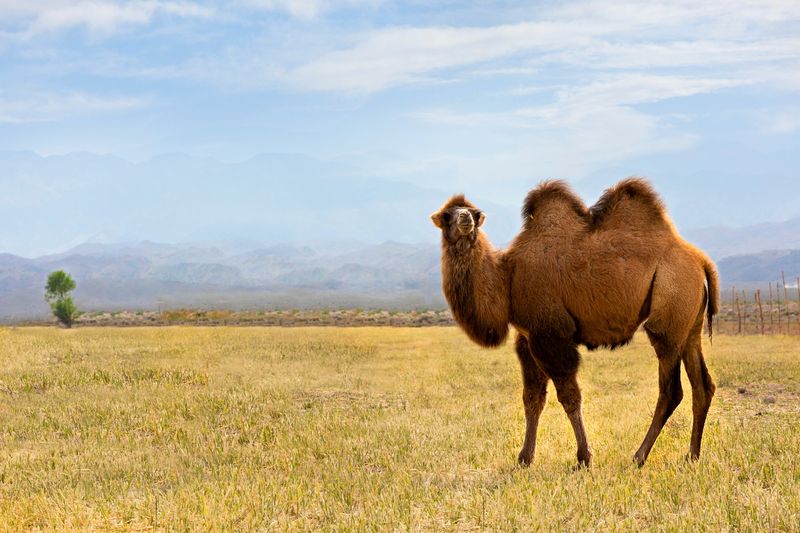
Camels are iconic symbols of desert survival, and their humps play a critical role. Contrary to popular belief, these humps store fat, not water. This fat can be metabolized into energy and water, sustaining the camel during long journeys without access to food or water. This energy reserve is particularly vital during harsh desert seasons when resources are scarce. Additionally, camels can withstand significant body temperature fluctuations, reducing water loss through sweating. Their hump-based adaptation allows them to traverse deserts for days. Truly, camels exemplify the resilience and adaptability of desert creatures.
Kangaroo Rat’s Water Conservation
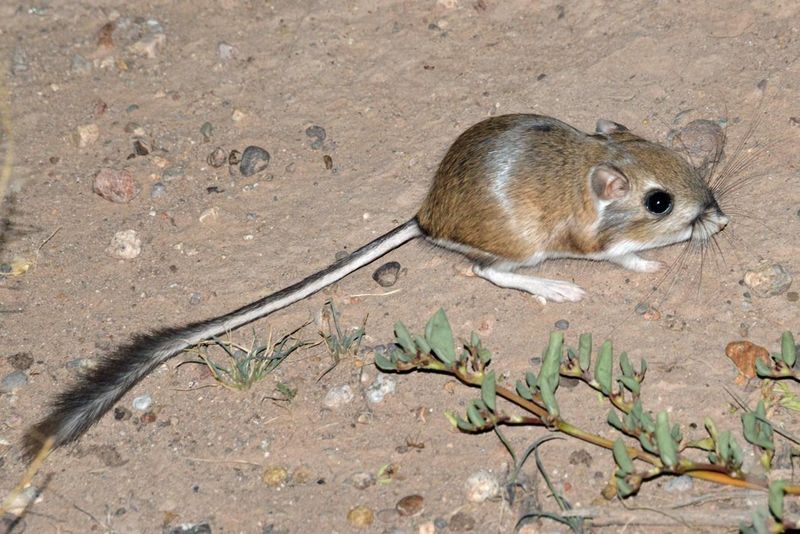
The Kangaroo Rat, native to North American deserts, is a master of water conservation. It can live its entire life without drinking water, obtaining moisture from the seeds it consumes. Its kidneys are highly efficient, producing concentrated urine to minimize water loss. This adaptation is crucial for its survival in such arid environments where water is scarce. Furthermore, it is nocturnal, which helps avoid daytime heat and reduces water loss through perspiration. The Kangaroo Rat’s ability to thrive without direct water intake is a remarkable testament to evolutionary adaptation, showcasing nature’s ingenuity.
Gila Monster’s Fat Storage
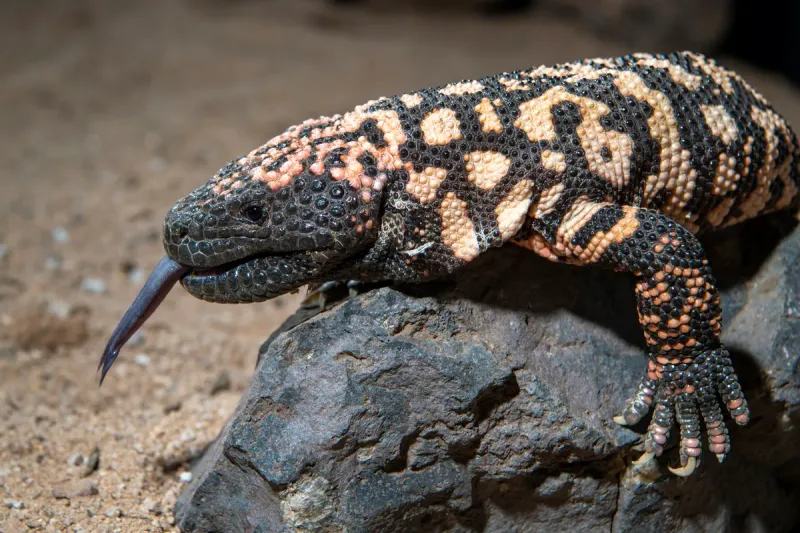
The Gila Monster, one of the few venomous lizards, has adapted to desert life through effective fat storage. It can consume large meals and store fat in its tail for future use. This fat reserve is crucial during times of food scarcity, enabling the Gila Monster to survive prolonged periods without eating. Additionally, its slow metabolism helps conserve energy and water. The Gila Monster’s ability to store nutrients effectively allows it to endure adverse conditions. This adaptation is a striking example of how desert animals optimize resources for survival in unforgiving environments.
Thorny Devil’s Skin Channels
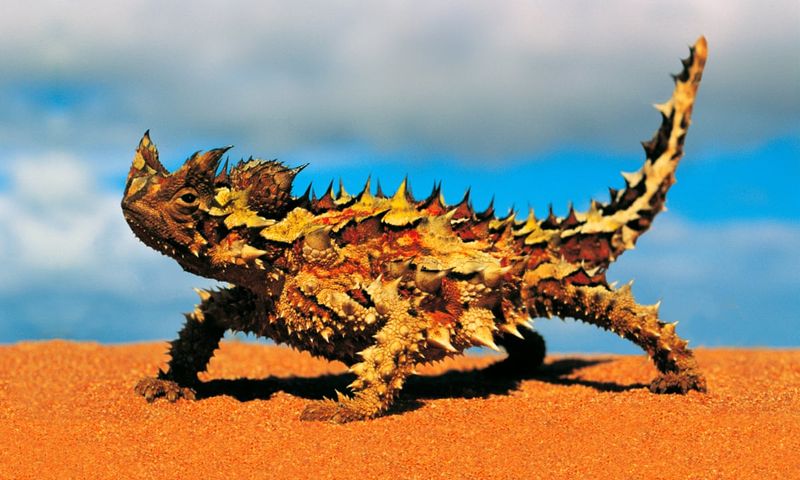
The Thorny Devil, a reptile native to Australia, has a unique adaptation that allows it to drink water directly through its skin. Its body is covered with tiny grooves that channel water to its mouth. Even in the driest conditions, dew and water droplets are absorbed through these channels. This adaptation allows the Thorny Devil to hydrate efficiently without needing direct water sources. Additionally, its spiny appearance camouflages it against predators. The Thorny Devil’s skin adaptation is a remarkable survival strategy, enabling it to thrive in harsh desert landscapes where water is a rare commodity.
Desert Tortoise’s Longevity
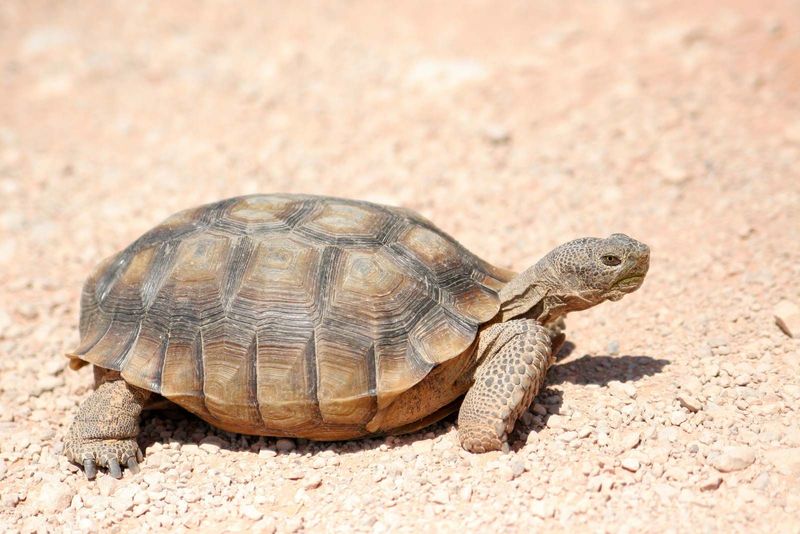
Desert Tortoises are known for their longevity and remarkable ability to survive in arid environments. They can live for over 50 years and have evolved several adaptations to thrive in the desert. Their primary survival strategy is water conservation, achieved through reabsorbing water from their bladder. This allows them to withstand long periods without water. During extreme heat, they remain in burrows to maintain a stable body temperature and prevent dehydration. Additionally, their tough, scaly skin minimizes water loss. The Desert Tortoise’s adaptations exemplify how evolution equips creatures to endure challenging habitats.
Sidewinder Snake’s Locomotion
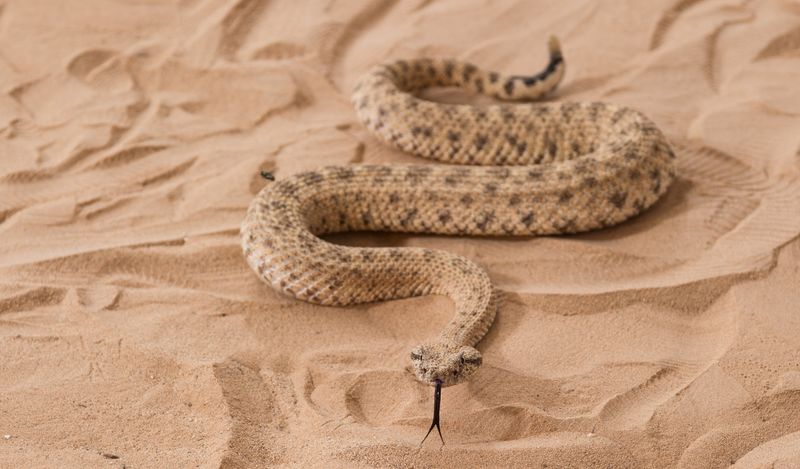
The Sidewinder Snake, found in North American deserts, has developed a unique form of locomotion to navigate hot sand efficiently. By moving sideways, it minimizes contact with the ground, reducing heat absorption and friction. This adaptation is crucial for conserving energy and avoiding burns from the scorching desert floor. Additionally, the sidewinding motion helps the snake escape predators and hunt for prey with agility. This efficient form of movement allows the Sidewinder to thrive in desert environments where temperatures can exceed 100 degrees Fahrenheit. Its locomotion adaptation is a fascinating aspect of its evolutionary success.
Addax Antelope’s Heat Tolerance
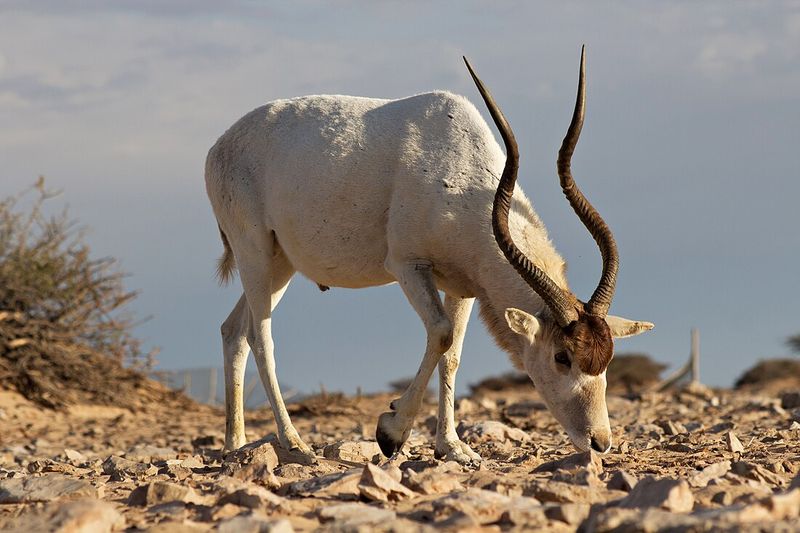
The Addax Antelope, native to the Sahara Desert, has evolved to withstand extreme heat. Its light-colored coat reflects sunlight, reducing body temperature. This antelope can survive without water for long periods by obtaining moisture from the vegetation it eats. During the hottest times of the day, it rests to conserve energy and water. Its kidneys efficiently recycle water, producing concentrated urine. The Addax’s ability to endure extreme temperatures and arid conditions makes it a remarkable example of desert adaptation. Its survival strategies reflect the incredible diversity of life that thrives in harsh environments.
Jerboa’s Leap and Burrow
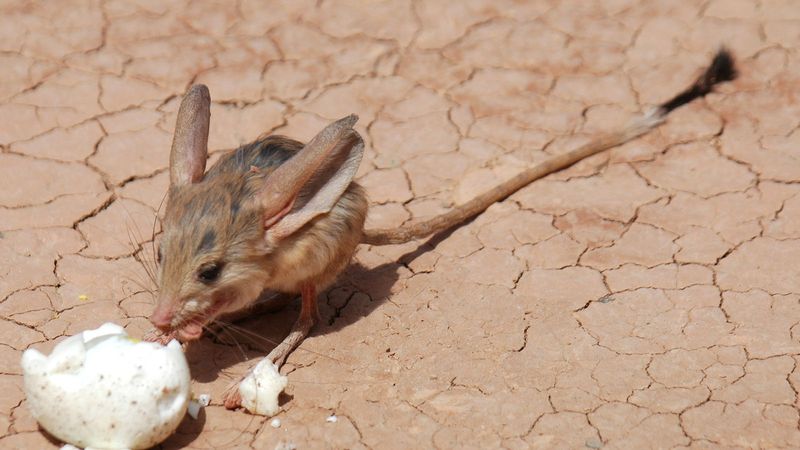
The Jerboa, a small rodent found in deserts across Asia and Africa, is known for its extraordinary jumping ability. Its long hind legs allow it to leap several times its body length, which aids in escaping predators. This agile movement also helps the Jerboa efficiently navigate the uneven desert terrain. To conserve water, it spends the day in burrows, emerging at night when temperatures are cooler. These burrows provide a stable microclimate, reducing water loss and exposure to extreme heat. The Jerboa’s adaptations showcase how small creatures ingeniously survive in challenging desert environments.
Meerkat’s Social Structure
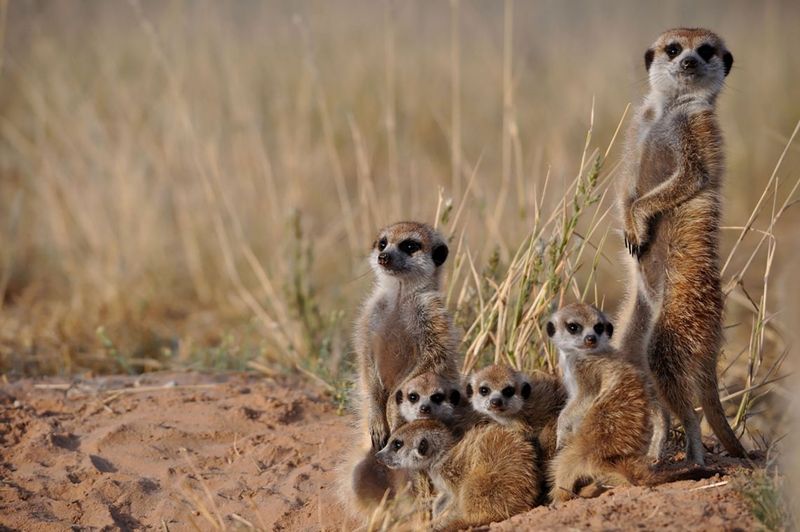
Meerkats are fascinating creatures that thrive in the deserts of Southern Africa. Their survival strategy is heavily reliant on their complex social structure. Meerkats live in large groups, with each member playing a vital role in their community. One of their key adaptations is the sentinel system, where one meerkat stands guard while others forage for food. This cooperative behavior ensures safety from predators. Additionally, meerkats dig extensive burrow systems, providing refuge from the desert heat. Their social and behavioral adaptations highlight how collaboration and community can enhance survival in harsh environments.
Cactus Wren’s Nest Building
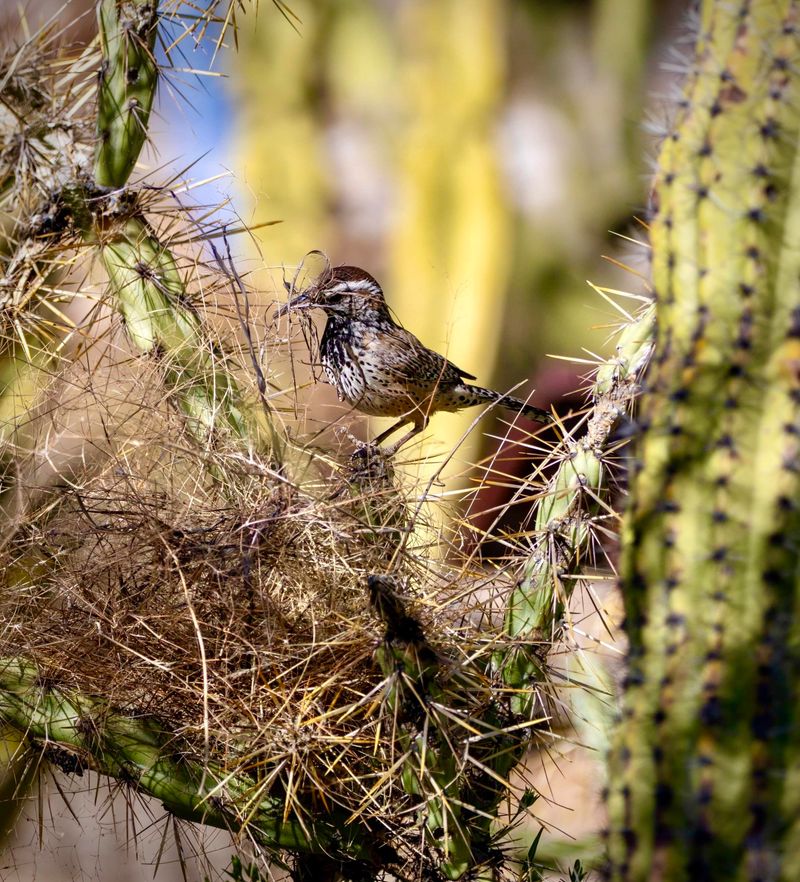
The Cactus Wren, native to the deserts of the southwestern United States, exhibits remarkable nest-building skills. It constructs its nest within thorny cactus plants, providing protection from predators. This strategic placement also offers shade, reducing exposure to the intense desert sun. The Cactus Wren’s adaptation extends beyond nest location; its diet includes insects and fruits, supplying necessary moisture and energy. The bird’s ability to utilize its environment for both shelter and sustenance is a testament to its adaptability. These nesting habits highlight the innovative ways desert birds thrive despite environmental challenges.
Scorpion’s Efficient Metabolism
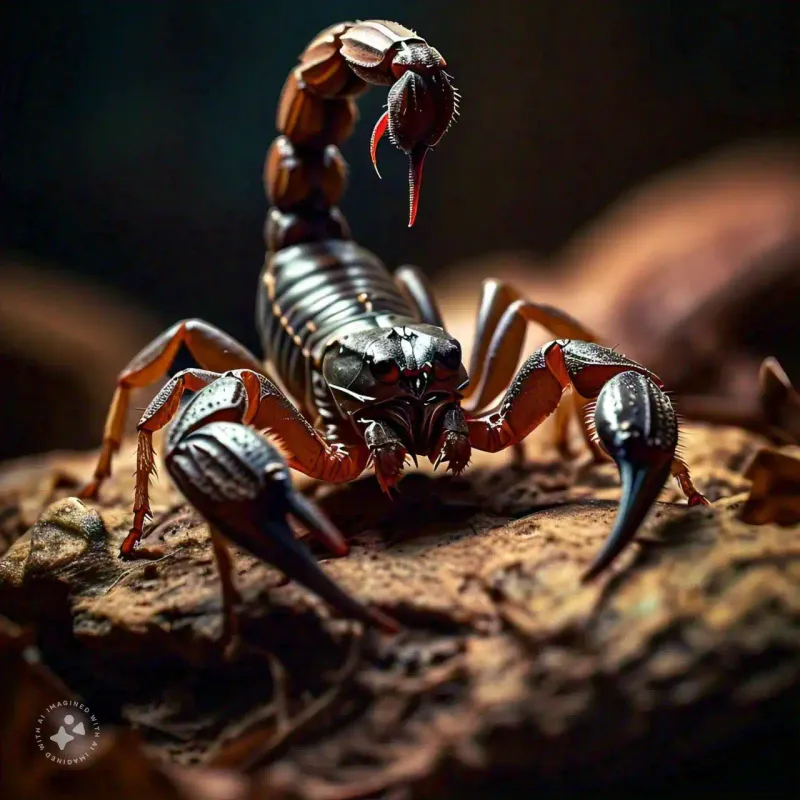
Scorpions are adept desert dwellers, capable of surviving in some of the harshest conditions. They have an extremely efficient metabolism, allowing them to survive on minimal food and water. Their exoskeleton reduces water loss, and they can slow down their metabolism during scarce times. This adaptation enables scorpions to wait long periods between meals, sometimes up to a year. Additionally, they are nocturnal, avoiding daytime heat and reducing dehydration risks. Scorpions’ metabolic efficiency and behavioral adaptations are key to their survival in arid environments, demonstrating nature’s ability to equip creatures for extreme resilience.
Roadrunner’s Speed
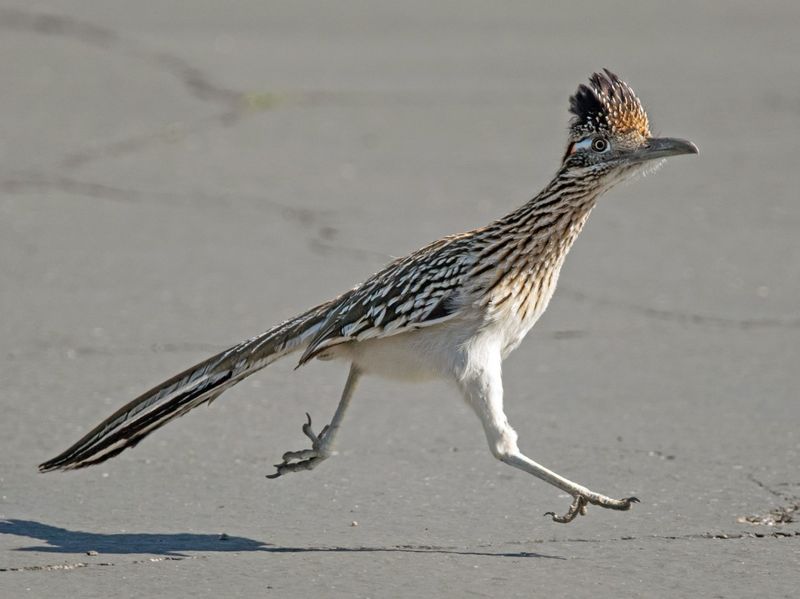
The Roadrunner is an iconic bird of the American Southwest, known for its impressive speed and agility. This bird can run up to 20 miles per hour, enabling it to catch prey and avoid predators. Its speed is a crucial adaptation, allowing it to thrive in the desert’s challenging terrain. Roadrunners are opportunistic feeders, consuming insects, reptiles, and even small mammals. They obtain moisture from their prey, reducing the need for direct water sources. This combination of speed, diet, and efficiency contributes to the Roadrunner’s success as a resilient desert survivor. Its adaptations are a testament to high speed.
Grasshopper Mouse’s Defensive Mechanisms
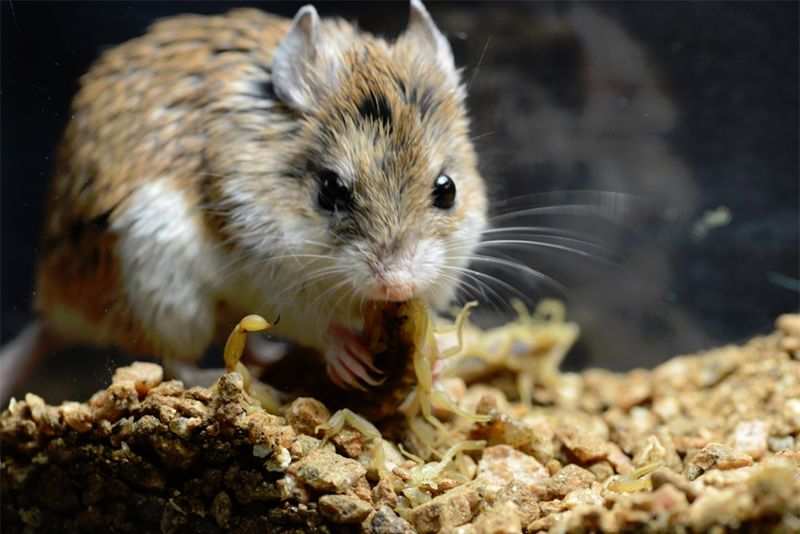
The Grasshopper Mouse, native to North American deserts, is a fierce predator despite its small size. Known for its unique adaptation, it hunts venomous scorpions, exhibiting resistance to their venom. This predatory behavior is vital for its survival, providing a reliable food source. The Grasshopper Mouse is also nocturnal, reducing water loss and avoiding daytime predators. Additionally, it howls to communicate and establish territory, a behavior rare among rodents. Its combination of boldness, dietary preference, and nocturnal habits illustrate the diverse strategies desert animals employ to thrive, even when faced with formidable challenges.
Namib Desert Beetle’s Fog Basking
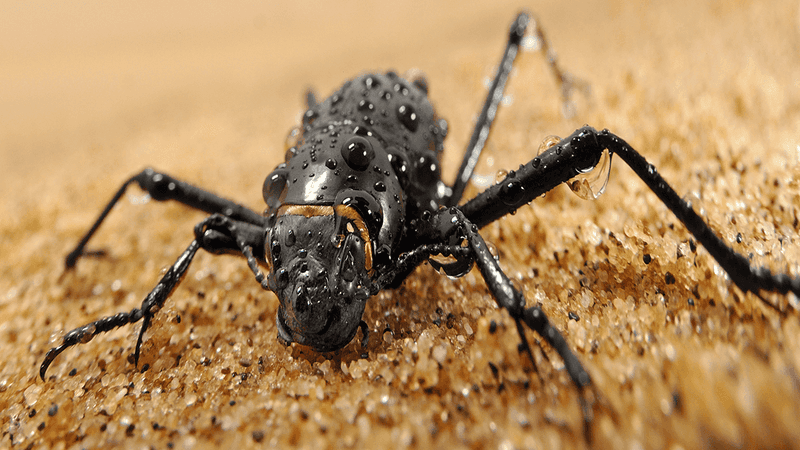
The Namib Desert Beetle has a unique way to overcome water scarcity. It collects moisture from fog by positioning its body to maximize water droplet accumulation. Special hydrophilic bumps on its back allow it to capture and channel water to its mouth. This adaptation enables it to drink from the fog, a rare water source in the arid Namib Desert. Additionally, its nocturnal behavior helps avoid daytime heat, conserving energy and reducing water loss. The beetle’s fog-basking technique is a prime example of how life ingeniously adapts to thrive under extreme desert conditions.
Sand Gazelle’s Water Regulation
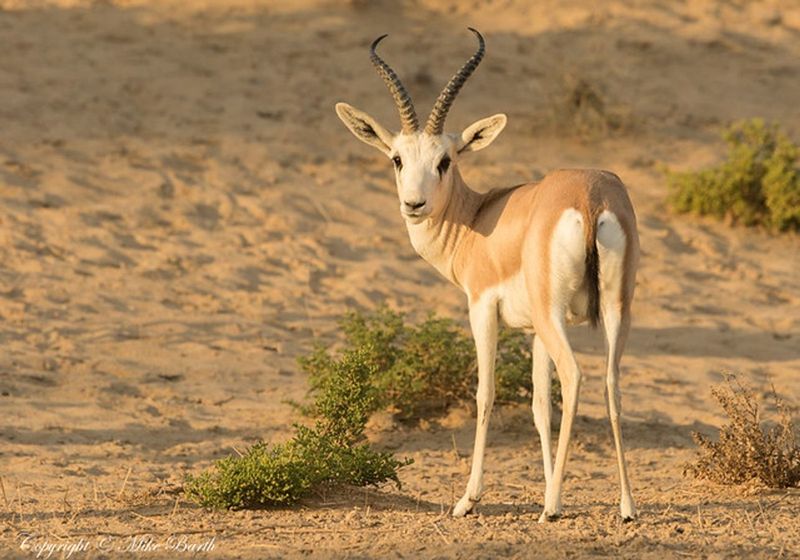
Sand Gazelles are remarkable for their ability to regulate water in extreme desert climates. They reduce their body temperature during the hottest parts of the day, minimizing water loss. This physiological adaptation allows them to survive on minimal water intake, primarily from the vegetation they consume. Additionally, Sand Gazelles have efficient kidneys that produce highly concentrated urine, conserving water. Their ability to thrive with limited water showcases the evolutionary development of physiological mechanisms that support survival. These adaptations highlight how desert animals have evolved intricate strategies to endure and prosper in harsh environments.
Desert Monitor’s Drought Resilience
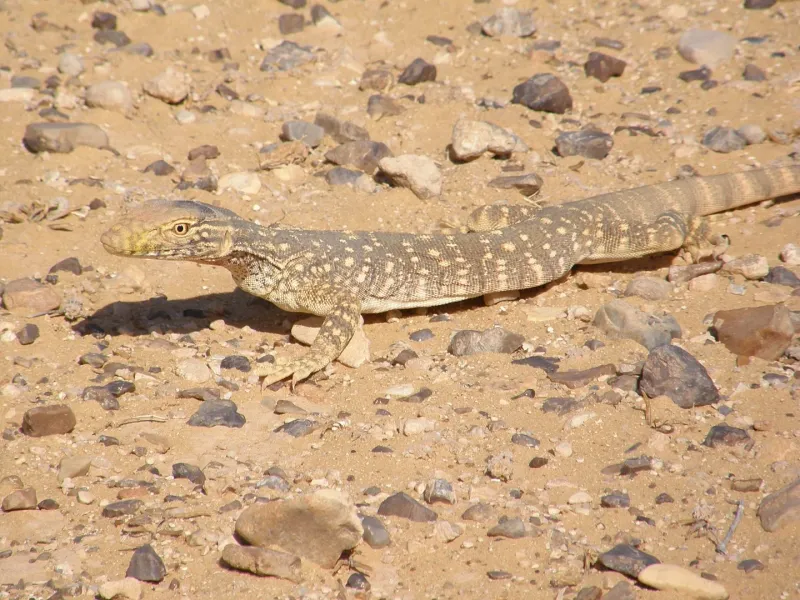
The Desert Monitor, a large lizard found in African and Asian deserts, exhibits impressive drought resilience. It can survive long periods without food or water, storing fat in its tail as an energy reserve. During times of scarcity, it slows its metabolism, conserving energy and reducing water needs. This adaptation allows it to endure harsh desert conditions. Additionally, it is an opportunistic feeder, consuming a wide range of prey to maximize nutrient intake. The Desert Monitor’s drought resilience is a testament to the adaptability of desert reptiles, demonstrating nature’s remarkable ability to equip creatures for survival.
Spadefoot Toad’s Dormancy
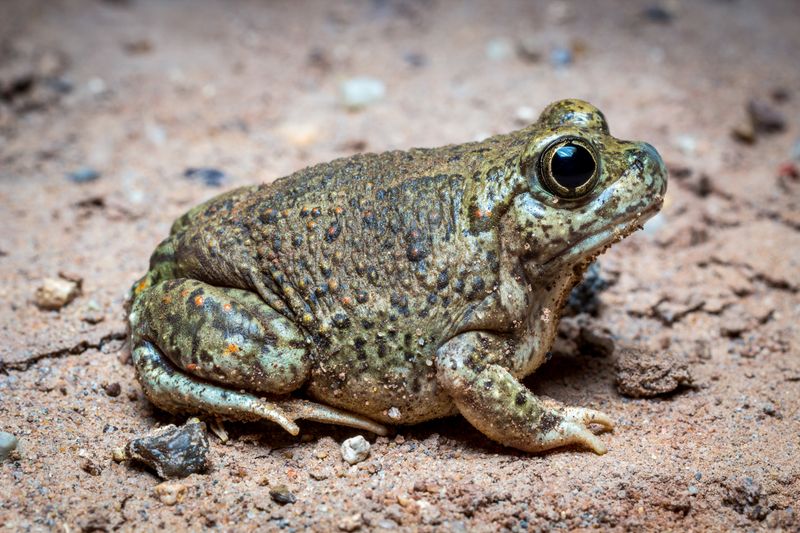
The Spadefoot Toad has a unique adaptation that allows it to survive desert droughts by entering a state of dormancy. It buries itself underground, creating a protective cocoon that prevents desiccation. In this dormant state, the toad can survive several months without water. When rain finally arrives, it emerges to breed and feed. This cyclical adaptation ensures the Spadefoot Toad capitalizes on rare desert rainfalls. Additionally, its rapid lifecycle allows it to reproduce quickly before the water evaporates. The toad’s dormancy strategy exemplifies how desert animals can synchronize their life cycles with environmental conditions.
Sand Cat’s Solitude
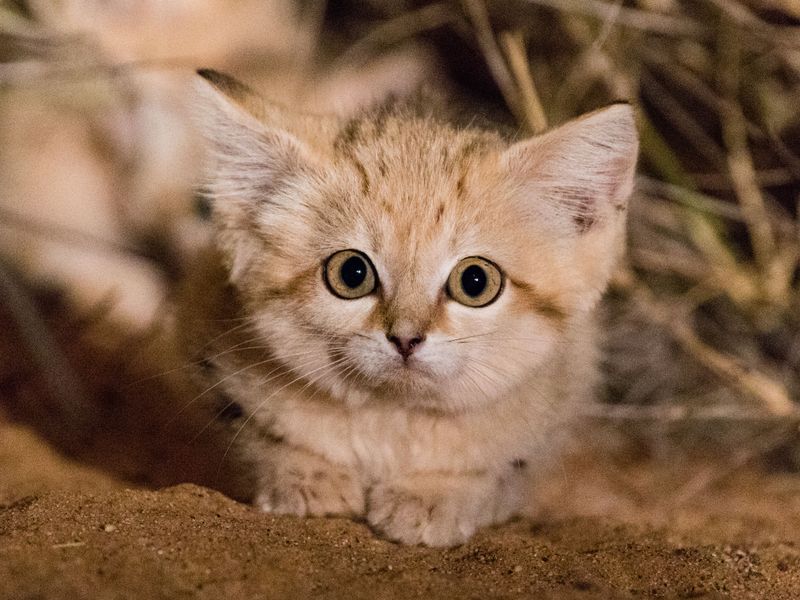
The Sand Cat, native to the deserts of North Africa and Asia, is a solitary and elusive predator. Its thick fur provides insulation against temperature extremes, while its large ears enhance hearing to detect prey. This keen sense of hearing is crucial for hunting in the vast desert landscape. Sand Cats are primarily nocturnal, avoiding the daytime heat and conserving water. Their diet includes small mammals and reptiles, from which they derive necessary moisture. The Sand Cat’s solitary nature and physiological adaptations enable it to thrive in harsh desert environments, showcasing the role of behavioral strategies in survival.
Oryx’s Salt Balance
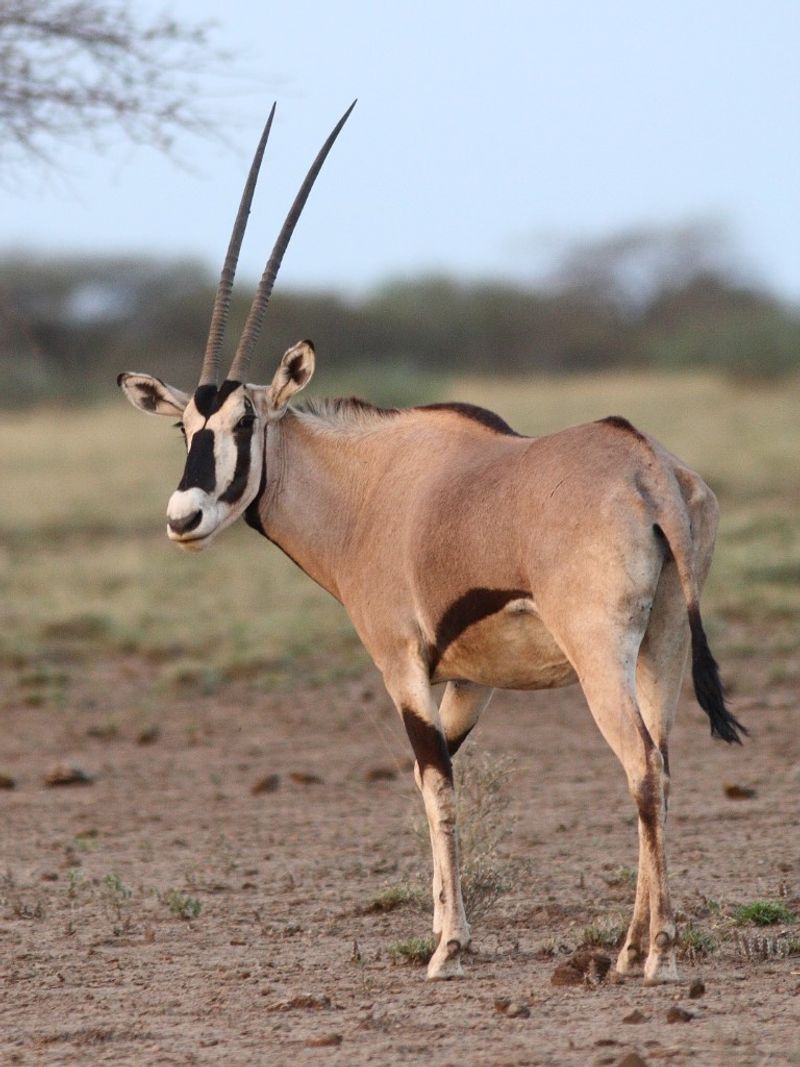
The Oryx, inhabiting African and Middle Eastern deserts, has a unique adaptation for maintaining salt and water balance. It can tolerate high body temperatures, which reduces the need for sweating and conserves water. Oryxes have specialized kidneys that excrete concentrated urine, effectively managing salt levels and water retention. They primarily feed on dry grasses, obtaining moisture from their food. This adaptation allows them to survive in extremely arid environments where water is scarce. The Oryx’s ability to maintain physiological balance in such conditions is a fascinating example of evolutionary adaptation, ensuring survival in inhospitable habitats.

